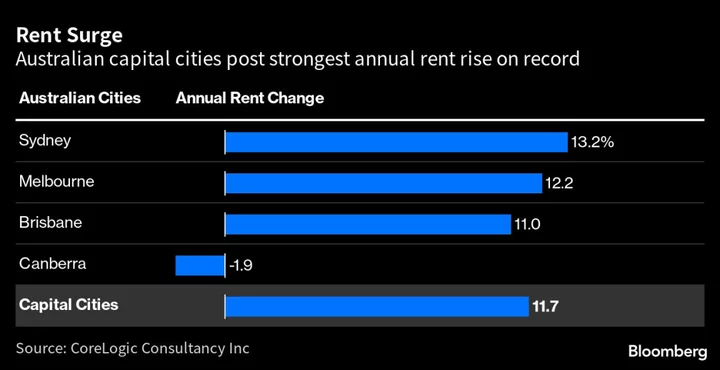Australia’s major cities posted the largest annual rent increase on record in May, fueled by rapid population growth and a significant shortfall in property listings that highlight powerful inflation pressures in the economy.
Sydney and Perth led gains with rises of 13.2% apiece, driving CoreLogic Inc.’s capital city index up 11.7%, data from the property consultancy showed Thursday. Canberra saw the weakest result as rents slid 1.9% last month.
“The unit sector is under the greatest pressure, with rents increasing at a faster rate than houses due to their relative affordability,” said Kaytlin Ezzy, economist at CoreLogic.
Soaring rents and likely further increases in coming months were among reasons Reserve Bank Governor Philip Lowe resumed raising interest rates in May, after a brief pause in April, and backed that up again this week. The spike in rental housing costs has become a significant social issue too as it calls into question Australians’ ability to secure affordable shelter.
The RBA this week lifted the cash rate to 4.1% - the highest level since April 2012 - and is expected to hike further, underscoring the difficulty in slowing economic activity and tamping down inflation. Australia isn’t alone, with the Bank of Canada restarting its tightening campaign overnight as well.
Since the onset of Covid-19, Australian major city rents have risen 25.7%, taking the median price to A$611 ($406.96) per week or roughly A$2,650 per month, the data showed.
The national vacancy rate hovered near a record-low 1.2% in May with total rental listings 33.3% below their long-term average, according to the data. Limited stock means tenants have less choice and weaker negotiating power.

